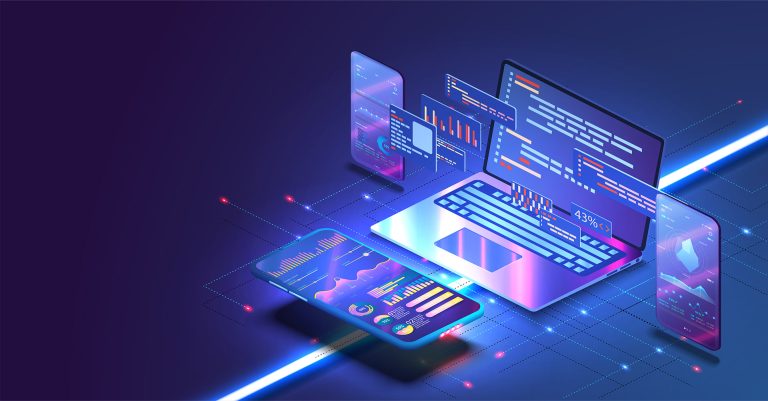
Understanding ePrescription Apps
What Are ePrescription Apps?
ePrescription apps represent a transformative approach in the healthcare sector, allowing healthcare professionals to create and manage electronic prescriptions efficiently. By replacing traditional paper prescriptions with digital formats, these applications enhance the process of prescription management. They empower doctors to prescribe medications quickly and reduce the likelihood of errors that can arise from illegible handwriting or miscommunication. Furthermore, ePrescription apps facilitate immediate access to patient medication histories, which is critical for safe and effective prescribing practices.
Key Features of ePrescription Apps
Modern ePrescription apps come equipped with several key functionalities designed to improve the user experience for both healthcare providers and patients. Some notable features include:
- Medication Database: An extensive, regularly updated database that provides healthcare practitioners with detailed information about various medications, dosages, and potential interactions.
- Patient Medication History: Easy access to a patient’s previous medications, which assists providers in determining appropriate treatments.
- Refill Requests: Patients can request refills directly through the app, streamlining communication between patients and pharmacies.
- Automated Notifications: Reminders sent to patients regarding medication schedules or refill prompts, improving adherence to prescribed therapies.
- Integration Capabilities: Ability to seamlessly integrate with existing electronic health records (EHRs) and practice management systems for centralized healthcare delivery.
Benefits of Using ePrescription Apps
The transition from paper to electronic prescriptions offers numerous benefits that contribute to enhanced efficiency and patient safety in healthcare. Some significant advantages include:
- Reduced Errors: With electronic prescriptions, problems related to handwritten prescriptions—such as unclear writing or miscommunication—are significantly minimized.
- Time Efficiency: ePrescription apps speed up the workflow, allowing doctors to spend more time with patients rather than managing paperwork.
- Improved Patient Engagement: Many apps provide educational resources about prescribed medications, fostering better-informed patients.
- Data Analytics: ePrescription apps often come with analytics tools that help health professionals track medication usage patterns and patient outcomes.
- Enhanced Communication: The ability to send real-time prescription information to pharmacies reduces wait times and enhances the patient experience.
Critical Factors in Selecting an ePrescription App
User Experience and Interface
A critical factor that affects the adoption of ePrescription technology is user experience. The app’s interface should be intuitive and easy to navigate, ensuring that healthcare providers can use it effectively without significant training. Features such as a clean design, easy access to frequently used functions, and minimal loading times contribute to a positive user experience. A complex interface may lead to frustration and errors, thereby defeating the purpose of the technology.
Integration with Existing Systems
When selecting an ePrescription app, it’s crucial to assess how well it integrates with current electronic health records (EHR) or practice management systems already in use. Seamless integration minimizes workflow disruption and ensures that healthcare providers can access all necessary patient information in a centralized system. Compatibility with existing tools also allows for data sharing across platforms, which can enhance patient care.
Cost Considerations
Cost is often a determining factor in the selection of an ePrescription app. Healthcare providers should consider not only the initial purchase cost but also ongoing fees for maintenance, updates, and support. Additionally, evaluating potential savings generated by increased efficiency and reduced errors can provide insight into the true value of adopting a particular app.
Evaluating Popular ePrescription Apps
Top-Rated ePrescription App Reviews
Reviews of popular ePrescription apps can offer valuable insights into user experiences and help in making informed decisions. Apps like those available on various platforms have garnered attention for both positive and negative aspects. The eprescription app reviews emphasize user-friendly features, potential technical issues, and customer support experiences, which are critical factors to consider when selecting an ePrescription solution.
Real User Experiences
Real user feedback is vital for understanding how ePrescription apps perform in everyday clinical settings. Users frequently share their insights regarding app functionalities, reliability, and overall satisfaction. These experiences can guide prospective users toward apps that routinely meet or exceed expectations. Common themes among users often revolve around ease of use, support response times, and the ability to customize settings for individual practice needs.
Comparative Analysis of Features
Conducting a comparative analysis of features across various ePrescription apps can reveal critical differences that may better align with specific healthcare practices. Features such as the medication database, integration capabilities with pharmacy systems, user interface, analytical tools, and overall support can be contrasted, allowing practitioners to choose the best fit for their needs. This analysis should also take into consideration feedback from current users to evaluate the practical effectiveness of each feature.
Challenges and Limitations of ePrescription Apps
Common User Complaints
Despite the myriad advantages ePrescription tech offers, users often face certain challenges. Common complaints may include difficulties with app navigation, bug issues, or inadequate customer service. Users also express concerns about the learning curve associated with new software, potentially leading to temporary productivity losses. Being aware of these issues ahead of time can help practices prepare for smooth transitions.
Technical Hurdles in Implementation
Implementing ePrescription apps may present technical hurdles that require careful consideration. Compatibility with existing systems, data migration from paper to digital formats, and the need for staff training can all pose implementation challenges. Providers should develop thorough strategies for overcoming these hurdles, including potential partnerships with IT professionals, to ensure that app deployment is successful.
Security and Compliance Risks
Security is paramount in healthcare, particularly regarding patient data. ePrescription apps must comply with regulations pertaining to patient privacy and data security, such as HIPAA in the United States. Ensuring that the app has robust security measures in place—such as encryption, two-factor authentication, and regular security updates—is crucial to maintaining compliance and protecting sensitive patient information.
Future Trends in ePrescription Technology
Innovations on the Horizon
The future of ePrescription technology will likely see continuous innovation driven by advancements in technology and evolving demands in healthcare. Emerging trends may include greater cloud integration for data storage, increased mobility through mobile applications, and improved AI-driven analytics that can provide more personalized therapeutic recommendations.
The Role of AI in ePrescription Apps
Artificial Intelligence (AI) is expected to have a significant impact on ePrescription apps, enhancing functionalities such as medication recommendations based on prior patient data, predicting drug interactions, and providing decision support to healthcare providers. With AI technologies becoming more sophisticated, the potential for more personalized patient care through these apps is promising.
Anticipated Impact on Healthcare Delivery
The ongoing evolution of ePrescription technology is set to enhance healthcare delivery by improving patient engagement, refining prescription accuracy, and enhancing overall treatment outcomes. As technology continues to integrate more deeply into the core of healthcare practices, providers will become better equipped to meet the needs of an increasingly digital patient population, ushering in a new standard for care delivery.






